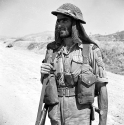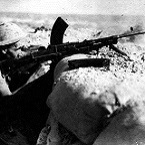Hardradi
Posts: 571
Joined: 2/9/2011
Status: offline

|
The little known Sicilian Gambit, from MALTA AND THE PUNIC WARS:
quote:
Carthage also planned for a war on two fronts. While Hannibal marched overland from Spain to invade Italy, a Punic force of fifty-five quinqueremes was sent to recover Sicily and raid the Italian coast. A northern task force of twenty ships with 1,000 troops was to retake the Lipari Islands and a southern task force of thirty-five ships with 8,500 soldiers and sailors was to seize the old Carthaginian stronghold of Lilybaeum. In addition to gaining these positions, Carthage hoped successful landings in and around Sicily would provoke a revolt among their Phoenician compatriots. Meanwhile, a force of 2,000 troops under Hamilcar, son of Gisgo, had been positioned on Malta.
The offensive did not go well. The northern task force was dispersed by a storm and then set upon by Syracusan ships from Messana, where Hiero of Syracuse happened to be staying while waiting for Sempronius to arrive. Three ships were lost, and the prisoners were interrogated. The existence of the other force heading for Lilybaeum was ascertained and Hiero immediately communicated this information to Praetor M. Aemilius, the governor of Sicily, and recommended dispatching a strong garrison to Lilybaeum. Aemilius did so at once.
The southern task force planned on seizing the supposedly unsuspecting port of Lilybaeum by surprise in a predawn attack, taking advantage of a full moon. During the night the Carthaginians had purposely lessened the speed of their vessels, so that they might reach Lilybaeum before daylight. They approached with full sails, hoping to sail directly into the harbor before the Romans were aware what was happening, a trick that had worked for them before in the First Punic War. But the garrison at Lilybaeum had been reinforced and the Romans were waiting for them. With their full sails reflecting the moonlight, they were easy to spot and the lookouts sounded the alarm. Seeing that they had lost the element of surprise and could not sail into the harbor, the Carthaginian fleet veered off. They stood out from the harbor and waited until daylight, and spent the time in lowering their masts and preparing for the naval action to come.
The Roman fleet sailed from the port, eager to come to close quarters and make a hand-to-hand fight of it. According to Livy, however, the Carthaginians "sought to avoid this and to succeed by maneuvering and not by direct attack; they preferred to make it a battle of ships rather than of soldiers. For their fleet was amply provided with seamen, but only scantily manned by soldiers, and whenever a ship was laid alongside one of the enemy's they were very unequally matched in fighting men." The Carthaginians proved incapable of ramming the Romans without becoming vulnerable to boarding parties. In a short time, seven of their ships were captured and the remaining twenty-eight fled the battle. As for the Roman fleet, it had not lost a single ship and returned to port with only one vessel damaged by ramming. In the seven ships they had captured, the Romans had taken 1,700 prisoners, including three Carthaginian nobles.
|
 Printable Version
Printable Version









 New Messages
New Messages No New Messages
No New Messages Hot Topic w/ New Messages
Hot Topic w/ New Messages Hot Topic w/o New Messages
Hot Topic w/o New Messages Locked w/ New Messages
Locked w/ New Messages Locked w/o New Messages
Locked w/o New Messages Post New Thread
Post New Thread